
How chromosomes shape up for cell division
EMBL scientists have shown how overlapping loops of DNA stack upon each other in dividing cells to give rise to rod-shaped chromosomes.
SCIENCE & TECHNOLOGY2025
science-technology
Showing results out of

EMBL scientists have shown how overlapping loops of DNA stack upon each other in dividing cells to give rise to rod-shaped chromosomes.
SCIENCE & TECHNOLOGY2025
science-technology
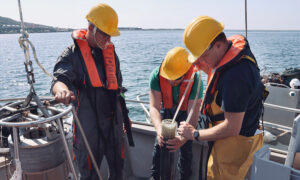
The Paleocore project, led by the French marine institute Ifremer and part of the TREC expedition, aims to study marine sediments to understand the impact of major historical events on ecosystems.
SCIENCE & TECHNOLOGY2025
science-technology

A study from the Hackett group at EMBL Rome led to the development of an epigenetic editing system that allows to precisely program chromatin modifications at any specific position in the genome, to understand their causal role in transcription regulation.
SCIENCE & TECHNOLOGY2024
science-technology

Alba Diz-Muñoz and Arnaud Krebs from EMBL Heidelberg have received grants to work on projects that aim, respectively, to understand the cellular mechanics that control cell division and investigate the regulatory networks that govern transcription factor function.
EMBL ANNOUNCEMENTSLAB MATTERS2023
embl-announcementslab-matters

The GA4GH standard refget quietly helps decipher millions of genomes sequenced worldwide, and it just got better.
2023
technology-and-innovation

EMBL Rome group leader Jamie Hackett receives EUR 2 million for the ModLogic project, aimed at understanding how chromatin modifications impact gene activity.
EMBL ANNOUNCEMENTSLAB MATTERS2023
embl-announcementslab-matters

EMBL researchers now understand the function of an elusive small DNA in bacteria and have developed a tool that can be used to better understand what might ‘switch on’ bacterial immune defences.
SCIENCE & TECHNOLOGY2022
sciencescience-technology
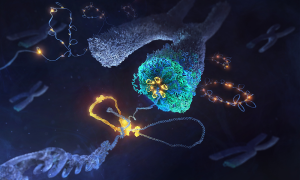
Researchers have discovered the mechanism by which a family of DNA motor proteins packages loosely arranged strands of DNA into compact individual chromosomes during cell division.
SCIENCE & TECHNOLOGY2022
sciencescience-technology
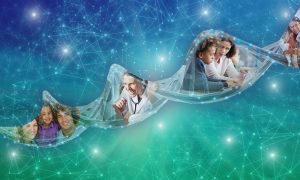
Ewan Birney discusses the input of both genetics and our environment in making us who we are
LAB MATTERS2022
lab-mattersperspectives
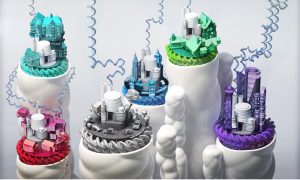
Genomes are made up of thousands of individual pieces – genes – which are expressed at different levels. Researchers at EMBL have shed light on how the placement of a gene affects its expression, as well as that of its neighbours.
SCIENCE & TECHNOLOGY2022
sciencescience-technology

EMBL alum Lara Urban has developed mobile DNA approaches to monitor impacts upon biodiversity in remote areas of New Zealand and elsewhere.
SCIENCE & TECHNOLOGY2021
alumniscience-technology
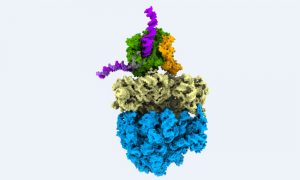
This colourful image shows biological information flow in action: It’s a supramolecular assembly of DNA, RNA and proteins, observed directly inside a bacterial cell while turning genetic information into protein.
SCIENCE & TECHNOLOGY2021
picture-of-the-weekscience-technology
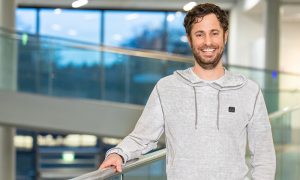
One of EMBL’s newest group leaders, Olivier Duss, will explore how RNA folds into functional structures and how it works with proteins to control a diverse range of activities in the cell.
LAB MATTERSPEOPLE & PERSPECTIVES2021
lab-matterspeople-perspectives

EMBL scientists and collaborators help reveal the process by which enormous quantities of DNA are folded into cells.
SCIENCE & TECHNOLOGY2020
sciencescience-technology
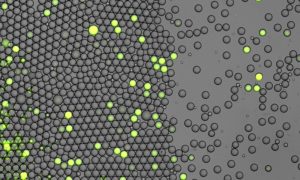
Bacterial cells are embedded in microfluidic droplets in oil. The fluorescence indicates the presence of the targeted DNA strain with the help of a characteristic DNA sequence.
SCIENCE & TECHNOLOGY2020
picture-of-the-weekscience-technology
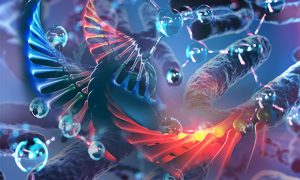
A study conducted by the Hackett group at EMBL Rome has identified key factors controlling the complex system of gene regulation during early embryo development, shedding new light on the mechanisms behind these events and on their evolutionary implications. Their findings are published in Nature…
SCIENCE & TECHNOLOGY2020
sciencescience-technology
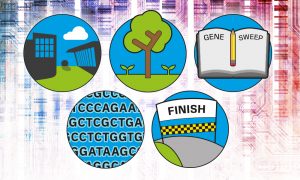
Today we celebrate the 20th anniversary of the first draft of the entire human genome.
SCIENCE & TECHNOLOGY2020
sciencescience-technology
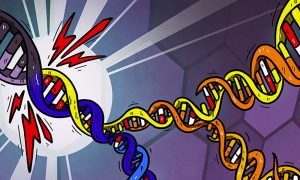
DNA damage caused by chemical mutagens is not repaired immediately and can create more genetic diversity in tumours.
SCIENCE & TECHNOLOGY2020
sciencescience-technology
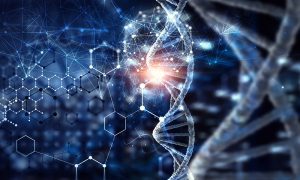
Scientists at EMBL Rome unveil the mechanism behind the most studied epigenetic modification.
SCIENCE & TECHNOLOGY2020
sciencescience-technology
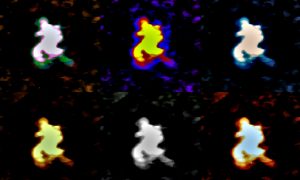
Researchers from EMBL Grenoble have developed a way to visualise large RNAs in 3D using biochemical and structural biology techniques.
SCIENCE & TECHNOLOGY2020
sciencescience-technology
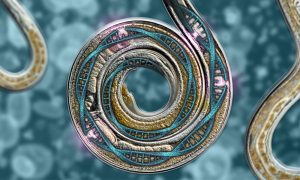
DNA mutations are caused by a combination of DNA damage and repair, shows study by EMBL-EBI and collaborators.
SCIENCE & TECHNOLOGY2020
sciencescience-technology
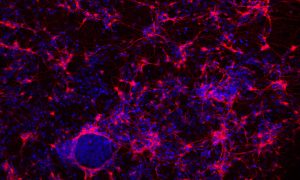
EMBL researchers investigate the role of a histone protein in regulating gene expression
SCIENCE & TECHNOLOGY2020
sciencescience-technology
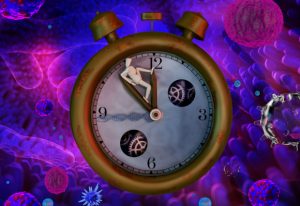
EMBL co-leads most comprehensive study of genetic causes of cancer
SCIENCE & TECHNOLOGY2020
sciencescience-technology
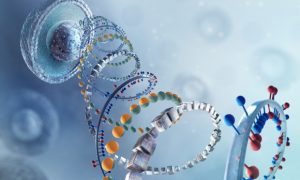
Analysis of whole cancer genomes gives key insights into the role of the non-coding genome in cancer
SCIENCE & TECHNOLOGY2020
sciencescience-technology
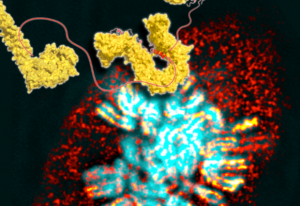
DNA is present in each cell of our body. If all the DNA from one human cell was removed and aligned in a single strand, it would in theory add up to a total length of about two metres. In order to fit into the nucleus of a cell, DNA has to be compressed by […]
SCIENCE & TECHNOLOGY2019
picture-of-the-weekscience-technology
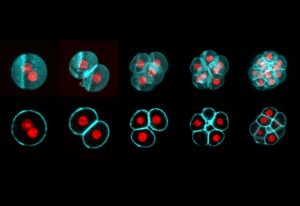
All mammalian life starts with the fusion of egg and sperm, resulting in the creation of a single cell called a zygote. This develops into an embryo through a series of cell divisions, in which the number of cells doubles at each step. Todays’ Picture of the Week was taken by Manuel Eguren of the…
SCIENCE & TECHNOLOGY2019
picture-of-the-weekscience-technology
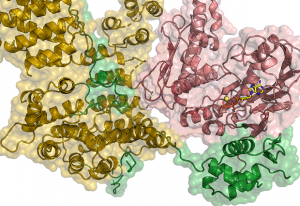
The mystery of how condensin maintains the integrity of the genome during cell division.
SCIENCE & TECHNOLOGY2019
sciencescience-technology
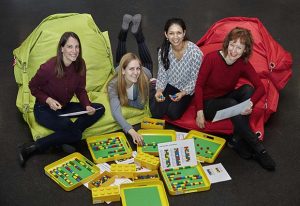
The team at ELLS use Lego to teach children the fundamentals of DNA.
LAB MATTERS2019
lab-matters

Professor Tim Lewens challenges the human genome’s unique place in bioethics
LAB MATTERS2019
eventslab-matters

EMBL is a world-leading organisation for life science research. Its scientists work in diverse research fields spanning the whole of molecular biology. While the molecules the researchers are working on are often microscopic and impossible to see with the naked eye, one research topic clearly…
SCIENCE & TECHNOLOGY2019
picture-of-the-weekscience-technology

Scientists develop technology to measure how ATP concentration affects protein solubility in cells
SCIENCE & TECHNOLOGY2019
sciencescience-technology

New search engine allows researchers to identify antibiotic resistance genes or mutations in real time
SCIENCE & TECHNOLOGY2019
sciencescience-technology
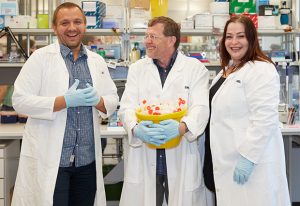
EMBL’s GeneCore steps up to discover the facts and settle disputes
LAB MATTERS2018
lab-matters
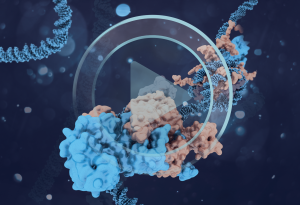
EMBL scientists gain mechanistic insights into how cellular signalling controls gene regulation
SCIENCE & TECHNOLOGY2018
sciencescience-technology
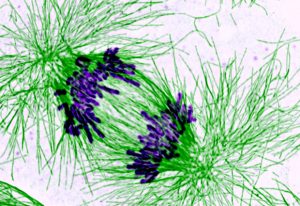
EMBL scientists discover how a component of the cohesin ring binds DNA
SCIENCE & TECHNOLOGY2018
sciencescience-technology
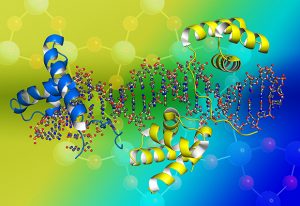
EMBL researchers develop method that simplifies the isolation of DNA- and RNA- protein complexes
SCIENCE & TECHNOLOGY2018
sciencescience-technology
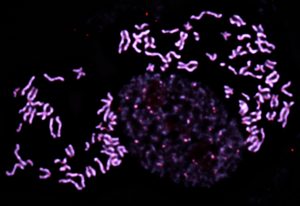
EMBL group leader Jan Korbel reflects on his scientific origins and current research
SCIENCE & TECHNOLOGY2018
sciencescience-technology
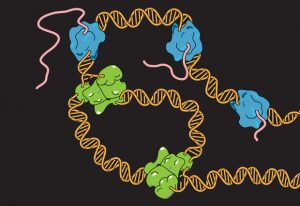
Thanos Halazonetis discusses the EMBO/EMBL Symposium: DNA Replication: From Basic Biology to Disease
SCIENCE & TECHNOLOGY2018
eventsscience-technology
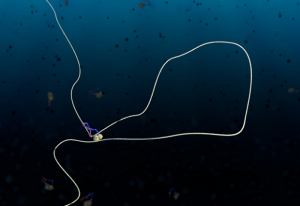
Researchers from Delft University and EMBL crack the mystery of condensin’s neat DNA loop extrusion
SCIENCE & TECHNOLOGY2018
sciencescience-technology

EMBL researchers uncover how a key enzyme that helps cells make new proteins starts its work
SCIENCE & TECHNOLOGY2018
sciencescience-technology
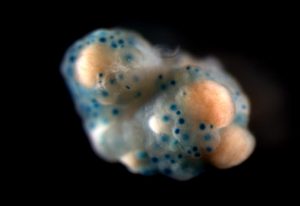
New EMBL group leader investigates the mystery of heritable gene silencing
PEOPLE & PERSPECTIVES2018
people-perspectivesscience
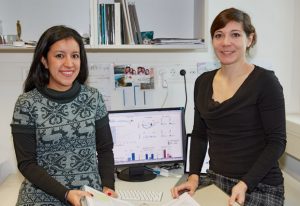
EMBL scientists unveil how 3D chromatin structure affects RNA splicing
SCIENCE & TECHNOLOGY2017
sciencescience-technology
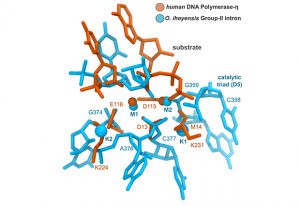
EMBL scientists superimpose structures of two-metal-ion enzymes and reveal new potential drug targets
SCIENCE & TECHNOLOGY2017
sciencescience-technology
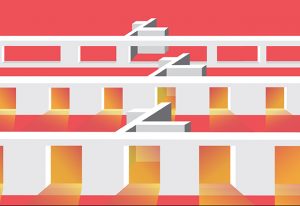
New research shows how pores form in the membrane that surrounds a cell’s nucleus
SCIENCE & TECHNOLOGY2017
sciencescience-technology

EMBL researchers and collaborators unravel how chromosomes form
SCIENCE & TECHNOLOGY2017
sciencescience-technology
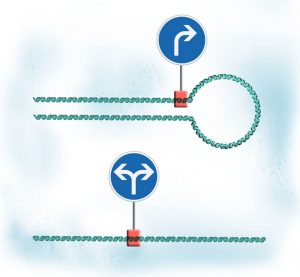
In a nutshell: Looping and unlooping DNA adjusts readout from gene and spread of regulation throughout the genome When a gene forms a loop, its output increases, as the transcription machinery that reads it is trapped into moving only along that gene When the gene loop is undone, transcription…
SCIENCE & TECHNOLOGY2012
sciencescience-technology
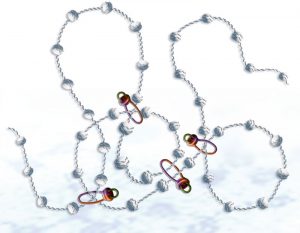
As any rock-climber knows, trailing a long length of rope behind you is not easy. A dangling length of rope is unwieldy and hard to manoeuvre, and can get tangled up or stuck on an outcropping. Cells face the same problem when dragging chromosomes apart during cell division. The chromosomes are…
SCIENCE & TECHNOLOGY2011
sciencescience-technology
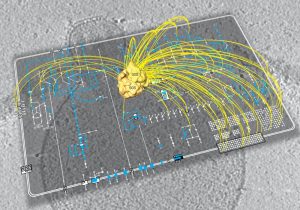
What are the bare essentials of life, the indispensable ingredients required to produce a cell that can survive on its own? Can we describe the molecular anatomy of a cell, and understand how an entire organism functions as a system? These are just some of the questions that scientists in a…
SCIENCE & TECHNOLOGY2009
sciencescience-technology
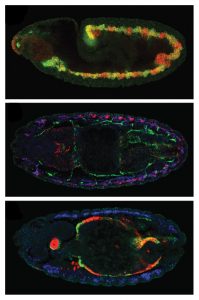
Embryonic development is like a well-organised building project, with the embryo’s DNA serving as the blueprint from which all construction details are derived. Cells carry out different functions according to a developmental plan, by expressing, i.e. turning on, different combinations of genes.…
SCIENCE & TECHNOLOGY2009
sciencescience-technology
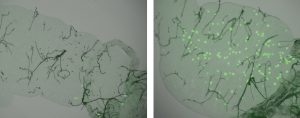
For many years, the mosquitoes that transmit malaria to humans were seen as public enemies, and campaigns to eradicate the disease focused on eliminating the mosquitoes. But, as a study published today in Science shows, the mosquitoes can also be our allies in the fight against this common foe,…
SCIENCE & TECHNOLOGY2009
sciencescience-technology
Our genome is constantly under attack from things like UV light and toxins, which can damage or even break DNA strands and ultimately lead to cancer and other diseases. Scientists have known for a long time that when DNA is damaged, a key enzyme sets off a cellular ‘alarm bell’ to alert the…
SCIENCE & TECHNOLOGY2009
sciencescience-technology
What makes a human different from a chimp? Researchers from the European Molecular Biology Laboratory’s European Bioinformatics Institute (EMBL-EBI) have come one important step closer to answering such evolutionary questions correctly. In the current issue of Science they uncover…
SCIENCE & TECHNOLOGY2008
sciencescience-technology
UK-based researchers at the Medical Research Council Functional Genomics Unit in Oxford and the European Molecular Biology Laboratory’s European Bioinformatics Institute in Cambridge have revealed the genetic makeup of the one of the world’s strangest mammals. They have analysed the DNA…
SCIENCE & TECHNOLOGY2008
sciencescience-technology
The ENCyclopedia Of DNA Elements (ENCODE), an international research consortium organised by the National Human Genome Research Institute (NHGRI), part of the National Institutes of Health (NIH), today published the results of its exhaustive, four-year effort to build a “parts list” of…
SCIENCE & TECHNOLOGY2007
sciencescience-technology
Microorganisms make up more than a third of the Earth’s biomass. They are found in water, on land and even in our bodies, recycling nutrients, influencing the planet’s climate or causing diseases. Still, we know surprisingly little about the smallest beings that colonise Earth. A new…
SCIENCE & TECHNOLOGY2007
sciencescience-technology
Species evolve at very different rates, and the evolutionary line that produced humans seems to be among the slowest. The result, according to a new study by scientists at the European Molecular Biology Laboratory [EMBL], is that our species has retained characteristics of a very ancient ancestor…
SCIENCE & TECHNOLOGY2005
sciencescience-technology
Achieving equality between the sexes can be a challenge even for single cells. Since evolution began removing bits of male DNA to create the ‘Y’ chromosome, males have had a single copy of certain key genes on the X chromosome, whereas females have two. Normally this would lead females…
SCIENCE & TECHNOLOGY2005
sciencescience-technology
The world’s three leading public repositories for DNA and RNA sequence information have reached 100 gigabases (100,000,000,000 bases; the ‘letters’ of the genetic code) of sequence. Thanks to their data exchange policy, which has paved the way for the global exchange of many types…
CONNECTIONSLAB MATTERS2005
connectionslab-matters
No results found